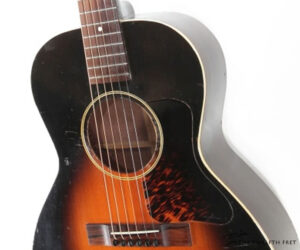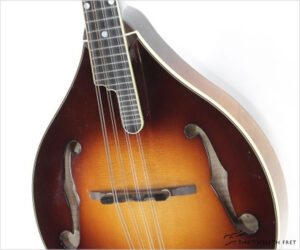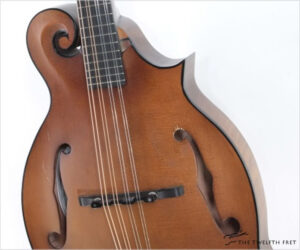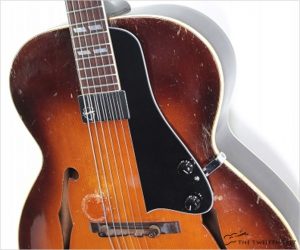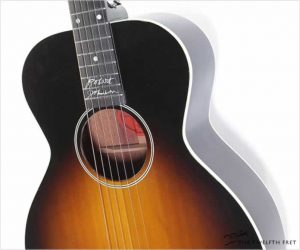This Gibson L-00 dates to 1934, with the L-00 built from 1932 to 1945 as the lowest cost L model. There have been some reissues of 1930’s models offered in the last decade. And yes, the ’00’ is two zeros. For being plain, the Gibson L-00 models are remarkably good sounding instruments with a very even representation throughout the tonal range. As with many Gibson models, the top is Spruce. The sides, back, neck, body blocks and linings are mahogany, and the bridge and unbound fingerboard are rosewood.
This instrument has sold
MORE →